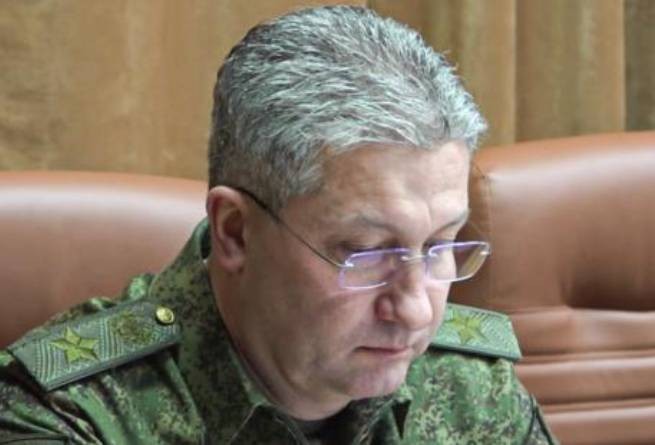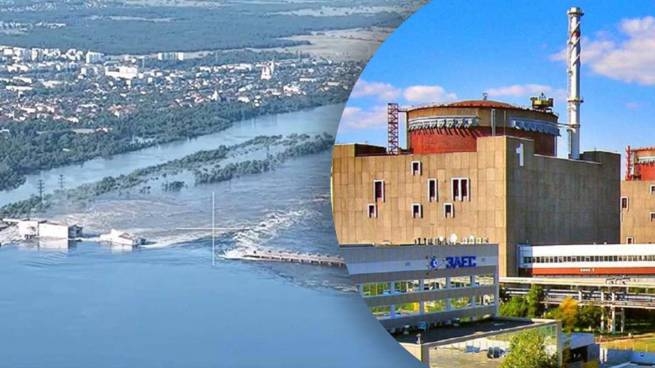Energoatom’s statement: “Blowing up the Kakhovskaya HPP may have negative consequences for ZNPP.”
The BBC publication quotes a statement by Ukraine’s state-owned nuclear energy company about the situation at the Zaporozhye nuclear power plant after the destruction of the Kakhovka hydroelectric power station:
“The blowing up of the Kakhovka hydroelectric power station may have negative consequences for the ZNPP, but the situation is under control. On the night of June 6, 2023, Russian invaders blew up the dam of the Kakhovka hydroelectric power station. As a result of the detonation, the water level in the Kakhovka reservoir is rapidly decreasing, which is an additional threat to the temporarily occupied Nuclear Power Plant Water from the Kakhovka Reservoir is needed by the plant to feed the turbine condensers and safety systems of ZNPP The plant cooling pond is now full As of 08:00, the water level is 16.6 meters, which is sufficient for the needs of the plant Current situation at ZNPP is under control, the Ukrainian staff monitors all indicators. In case of a change in the situation, Energoatom will promptly inform about the state of affairs.”
A dam failure can have other consequences as well. Ukraine accused the Russian Federation of dam explosionand this is the most logical explanation, writes Air Force, since Russia probably feared that Ukraine would use it to move troops across the river in its latest counter-offensive.
In all likelihood, the vital canal that carries water from the Dnieper to the Crimea, which begins at Novaya Khakovka, as well as the Zaporizhzhya nuclear power plant, located on the banks of the Dnieper some 160 km upstream, will be affected.
Andriy Yermak, head of Ukrainian President Volodymyr Zelensky’s office, said this morning that Russia would be held responsible for depriving Crimean residents of drinking water and said Russia’s actions “pose a threat to ZNPP.”
Flooding downstream can be catastrophic. Water from the Dnieper flows downstream towards Kherson. Authorities have warned residents of the city’s low-lying areas to evacuate as quickly as possible and seek shelter on higher ground. Modeling done at the end of last year showed that large areas on the right and left banks of the river could be flooded.
As of 9:00 a.m., several settlements have already been flooded in southern Ukraine. Oleksandr Prokudin, head of the Kherson regional military administration, says at least eight different communities in the area have already been flooded following reports of dam failures, and authorities are preparing for more floods in the region. He says at least 16,000 people are at risk from flood waters.
Residents of disadvantaged regions will be evacuated by bus to Kherson, then they will be transported to different cities of the country, including the capital Kyiv, Prokudin reports in a Telegram message. He added that at noon an evacuation train would leave Kherson for the southern city of Nikolaev.
Head of the Nikopol RVA Yevgeny Yevtushenko informedthat the water level in the Kakhovka reservoir is rapidly falling – by about 15 cm per hour. He asked the population to stock up on drinking water.
Now for the military implications. Obviously, if the channel of the Dnieper in the Kherson region becomes wider, then Ukrainian operations to send troops or reconnaissance groups to the left bank will become much more complicated. Including through the islands near Kherson, which at the time of the dam break were a contested territory and a convenient “bridge” for crossing to the left bank (the islands are flooded first). Earlier it was reported that on the left bank occupied by the Russian Federation, Ukrainian groups “go” quite often precisely in the coastal territories (from where, by the way, the Russians have long announced the evacuation).
It will also be more difficult with a counteroffensive through this sector – if, of course, it was planned there. At the same time, it is not known how the spill of the Dnieper in the Kherson region will affect the coastal fortifications and minefields of the Russian army.







More Stories
The Senate voted to allocate funding to Ukraine
From April 23, the Ministry of Foreign Affairs of Ukraine restricts access to consular services for men abroad
Mobilization in Ukraine: about the conditions for conscription of persons with disabilities